South Carolina Ports’ strategic and timely investments in port infrastructure provide crucial capacity to today’s challenging supply chain environment, said Jim Newsome, SC Ports’ president and CEO, during his 13th State of the Port address.
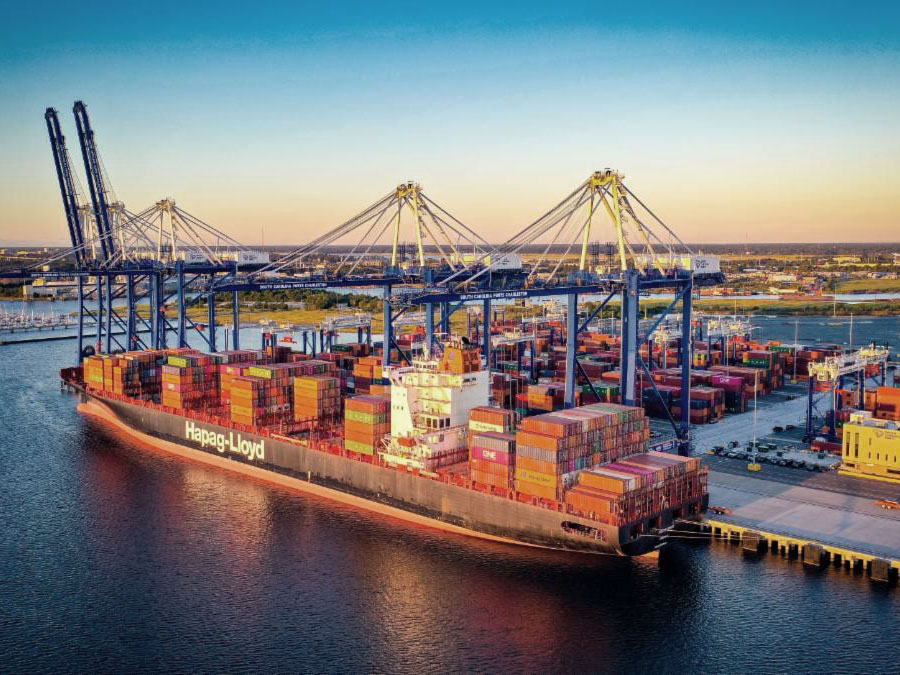
“The significant challenges in the global supply chain supply chain present an opportunity for cargo owners to diversify the port gateways they use to move goods,” Newsome said. “SC Ports has the berth availability, cargo capacity and fluidity to handle the record cargo volumes and unprecedented amount of retail imports flowing into the Port of Charleston.”
“Capacity is the new port currency, and SC Ports has the right capacity at the right time to meet retailers’ needs to keep freight moving,” Newsome said. “We have invested more than $2 billion in recent years to enhance existing infrastructure and open a new container terminal.”
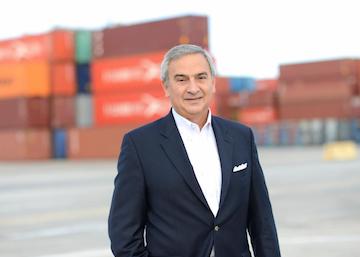
Investing in capacity
SC Ports is the only port in the country with new terminal capacity. The $1 billion Phase One of Hugh K. Leatherman Terminal opened in March 2021, marking the first container terminal to open in the U.S. in more than a decade and the only new container terminal capacity planned in the U.S. until 2030.
“We have been highly focused on delivering world-class infrastructure at the right time,” Newsome said. “Leatherman Terminal adds a berth and 700,000 TEUs of capacity to the Port of Charleston when it is most needed on the East Coast, ensuring speed-to-market for customers.”
Modernization of the bustling Wando Welch Terminal is also ongoing to handle more fully loaded, mega container ships. The terminal will soon have 15 ship-to-shore cranes with 155 feet of lift height.
These enhancements enable SC Ports to handle four 14,000-TEU vessels simultaneously. When both Leatherman Terminal is fully built with three phases and the upgrades to Wando Welch Terminal are complete, the container terminals will each boast 2.4 million TEUs of annual throughput capacity.
Meanwhile, the Charleston Harbor Deepening Project is on track to achieve a 52-foot depth in 2022, making Charleston Harbor the deepest on the East Coast in 2022 and enabling mega container ships to access terminals any tide of day.
An expansion of Inland Port Greer is also underway to enhance cargo capacity and rail infrastructure at the rail-served inland port in Upstate South Carolina.
“We have built smart, strategic infrastructure, putting us in a strong position to handle the influx of cargo as we continue to grow above the market,” Newsome said.
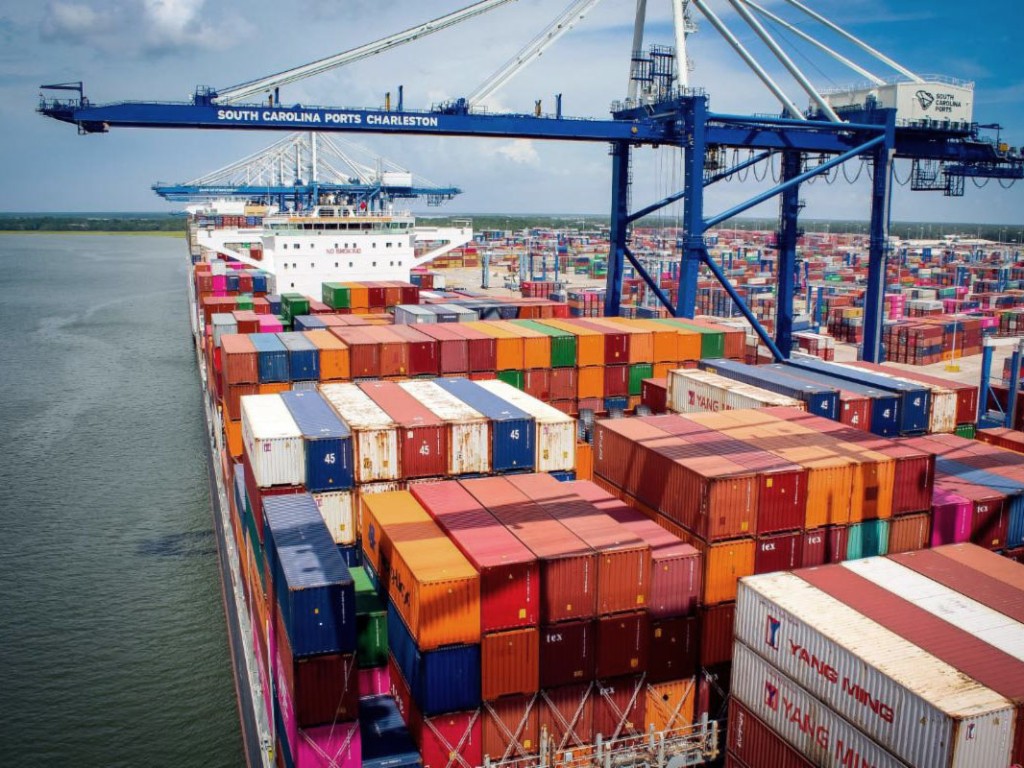
Growing the cargo base
Much of SC Ports’ growth over the past decade stems from its ability to expertly handle just-in-time manufacturing parts and finished vehicles for advanced manufacturers and automakers. This experience enables SC Ports to now handle retail and home goods for global retailers and e-commerce brands.
“The U.S. is consuming a record amount of goods. The big retailers continue to grow, increasing their need for a reliable partner in the supply chain,” Newsome said. “While the global supply chain remains under tremendous pressure, SC Ports has strategically invested in port infrastructure and efficient operations to provide retailers with the capacity and fluidity they need, particularly as we head into peak season.”
Retail distribution centers continue to flock to the Charleston region. Walmart is building its $220 million import distribution center in Ridgeville, S.C., set to open early next year. The import distribution center will create 1,000 jobs and move goods through the Port of Charleston to support Walmart’s supply chain network throughout the Southeast.
The transload facility on Wando Welch Terminal is bustling as it handles cargo for two major retailers, and SC Ports sees more retail-focused transload facilities and distribution centers on the horizon.
SC Ports is also seeing growth in other business segments. E. & J. Gallo Winery is investing $423 million to establish an East Coast bottling and distribution plant in Chester County to move wine and spirits through the Port of Charleston. Northwest Grains International LLC is building an agricultural transload operation in Dillon County to export agricultural goods for farmers through the Port of Charleston via the rail-served Inland Port Dillon.
“Companies with global supply chains want to locate near well-run ports,” Newsome said. “Port growth creates jobs and investments throughout the state. SC Ports generates a $63.4 billion annual economic impact and creates 1 in 10 jobs in South Carolina.”
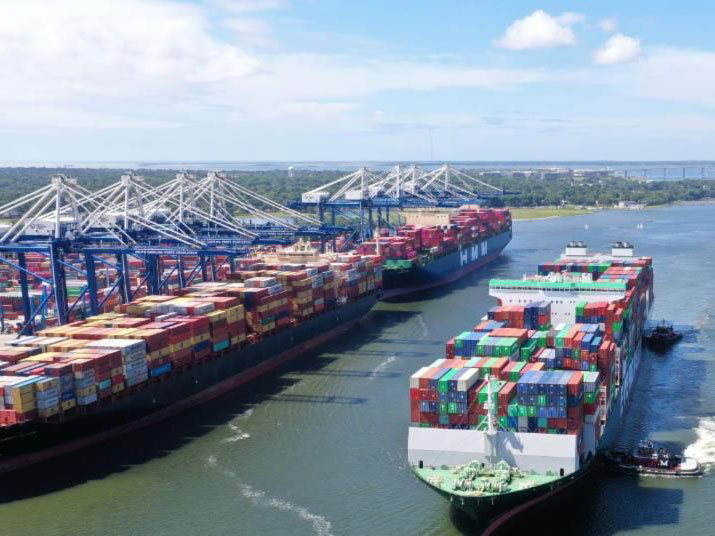
Developing future capabilities
Following the successful delivery of just-in time terminal capacity, SC Ports plans to develop a rail-served intermodal yard and an inner-harbor barge operation to ensure a fluid supply chain for South Carolina.
The Navy Base Intermodal Facility will provide much-needed, near-dock rail to Leatherman Terminal. Containers will be trucked from Leatherman Terminal on a 1-mile restricted drayage road, and CSX and Norfolk Southern will serve the Navy Base Intermodal Facility. SC Ports’ inner-harbor barge operation will move containers between Wando Welch Terminal and Leatherman Terminal.
These projects will swiftly move cargo for customers and reduce pressure on trucking capacity. The SC Legislature and Governor Henry McMaster took a significant step in the 2021-2022 fiscal year budget by including $200 million of the $550 million needed for the two projects.
“SC Ports must continue to deliver vital port infrastructure to meet the needs of customers and ensure a fluid supply chain,” Newsome said. “We are thankful to our state leaders for their visionary leadership and support. Strategic investments in port infrastructure are crucial to remain competitive as a port and as a state.”
SC Ports is also working to creatively address supply chain issues. SC Ports plans to launch its own chassis pool in 2022 with a focus on safety, quality and availability of equipment.
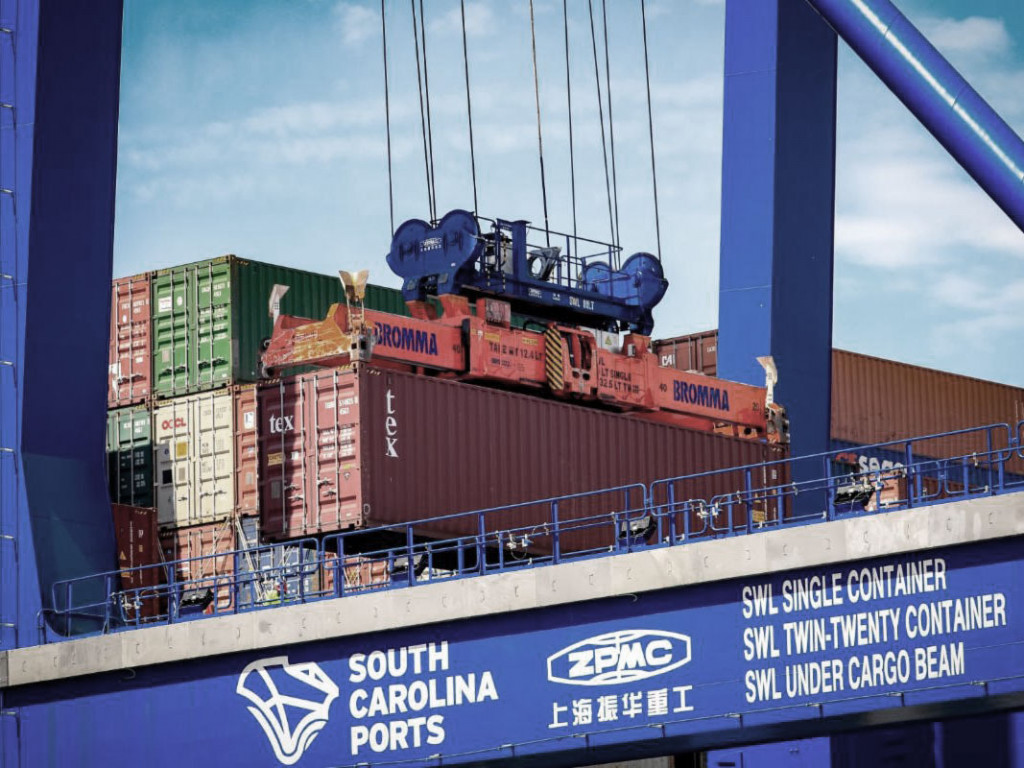
Appreciating the maritime community
While supply chain challenges continue, SC Ports continues to see signs of strength. Cargo volumes consistently break records. SC Ports is hiring 150 people to support this growth. Carnival Cruise Lines plans to resume operations in Charleston in January after more than a year-and-half hiatus. Companies are continuing to invest in S.C. facilities to gain access to South Carolina’s world-class port.
“We greatly appreciate the vision and guidance of our SC Ports Board of Directors and senior management team, as well as the continued support from Governor Henry McMaster, the S.C. Legislature, the Congressional delegation and all our business and community partners,” Newsome said. “Our success would not be possible without our partnerships.”
The global pandemic brought many unexpected challenges, requiring a tremendous amount of commitment and dedication by essential workers. The maritime community worked every day to ensure cargo arrived at manufacturing plants, hospitals, stores and homes throughout South Carolina and beyond.
“To our entire SC Ports team and all our maritime partners — tugboat operators, harbor pilots, the three ILA crafts, stevedores, truck drivers, rail and logistics partners, and our great customers — we thank you,” Newsome said. “A great port is only made possible by the great people behind it. We have the best team in place, ensuring a bright future ahead for SC Ports and for South Carolina.”










